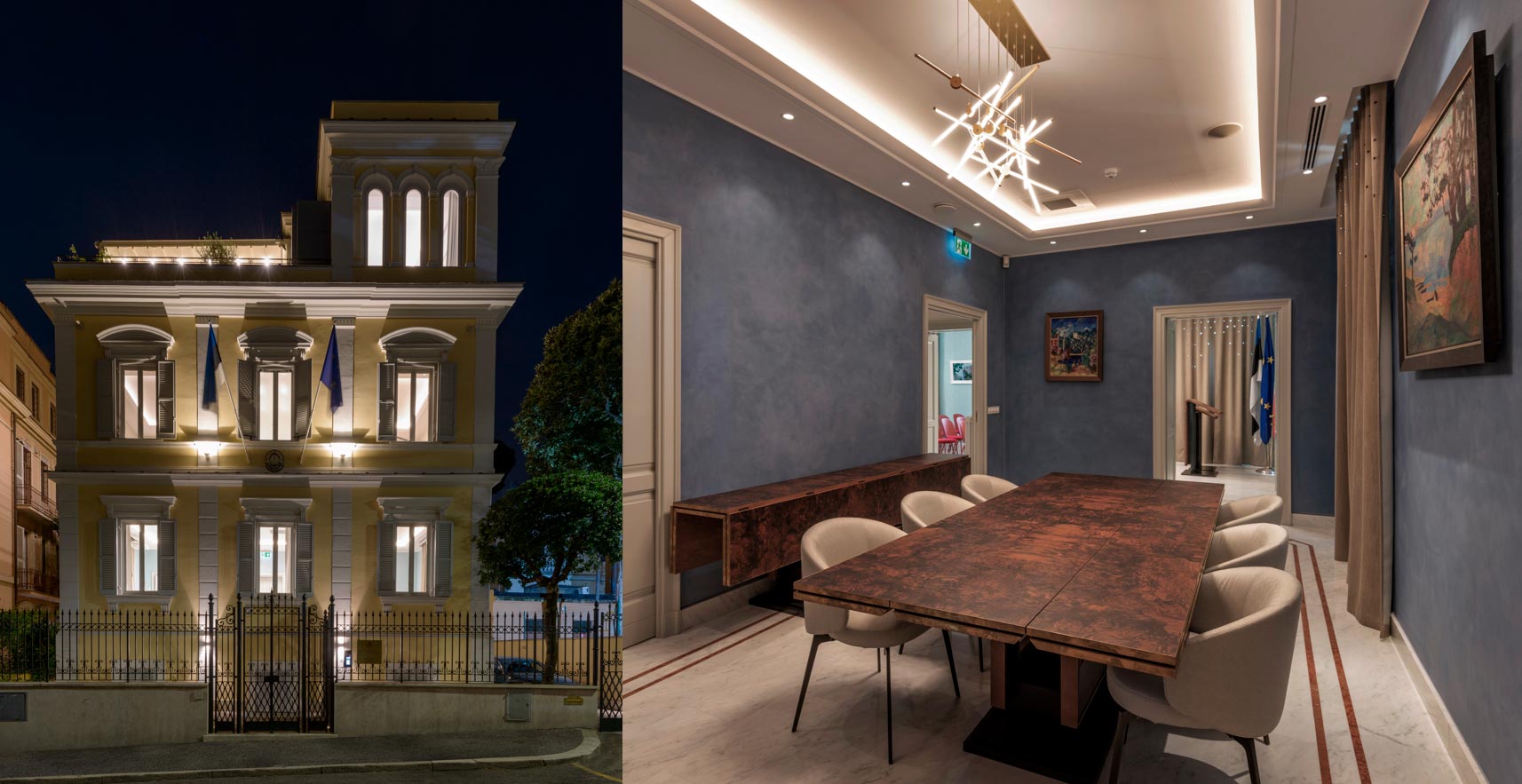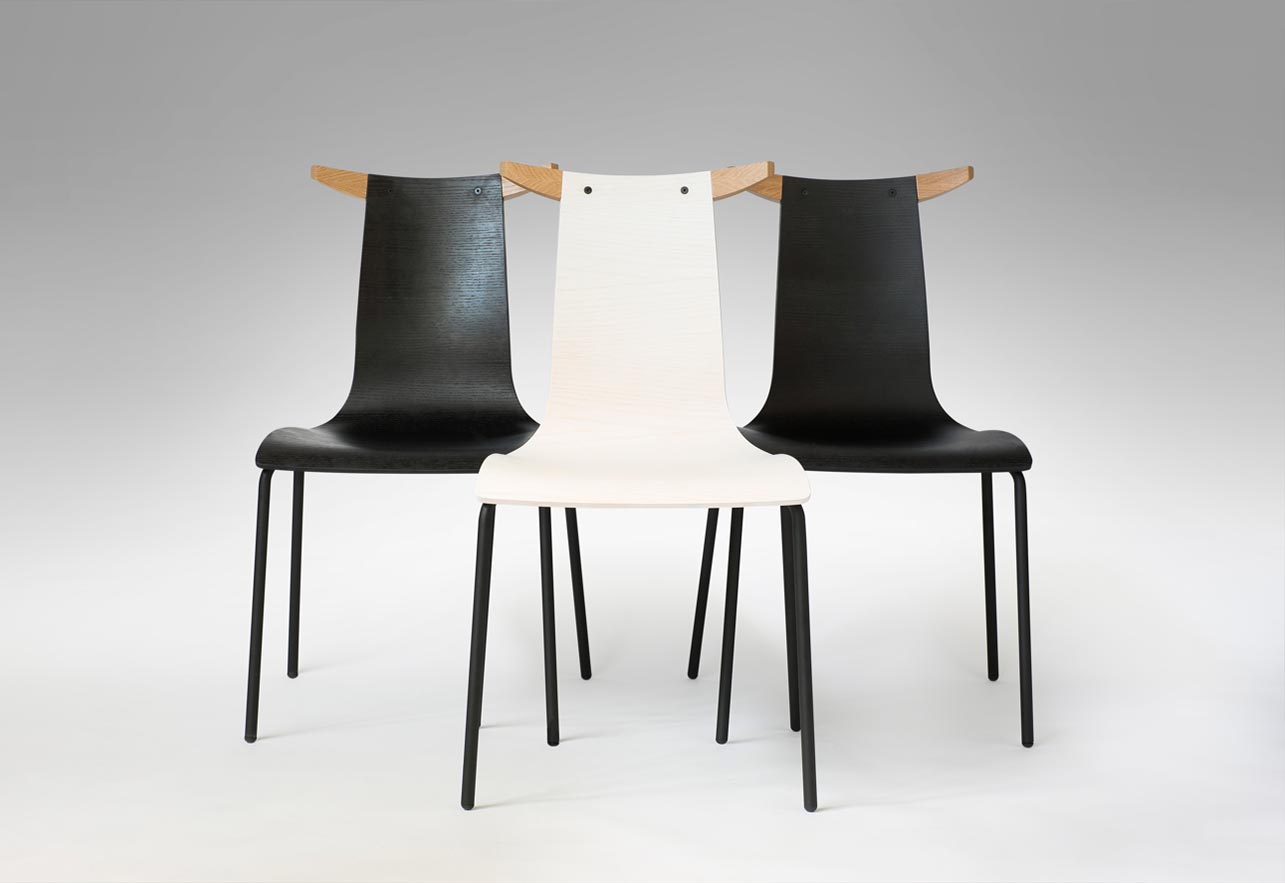Our friend Katrin Veiksaar at Italian Estonia Magazine made a brief article about our Lead Designer Eero Jürgenson and one of his latest projects. Here’s a loosely translated version of the article.
Thank you again Katrin for a lovely chat!
Original piece: https://cultura-e-lifestyle-estonia.webnode.it/l/il-designer-eero-jurgenson-lambasciata-e-una-specie-di-oasi/#
Designer Eero Jürgenson: “Embassy – a kind of oasis”
K: Eero Jürgenson, with the collaboration of Lennart Lind, you oversaw the renovation of the interior and exterior parts of the recently opened Estonian Embassy in Rome, a 500 square meter villa built in the early 1900s. Instead of Nordic colors – the classic white-gray – we can notice a typical Italian color palette. What helped you to arrive to this decision?
E: We tried to investigate and grasp the soul of this building as well as we possibly could. The historic villa had been quite well preserved. Therefore, by adapting the design of the villa and creating a new one, we tried to keep the authentic elements – of the interior – intact. In our opinion, the bold choice of colors is part of the essence of this villa.
K: What were the particular materials you used in the villa?
E: In the interior of the building, marble and wood were the original choices – there were also beautiful metal details made in the 19th century. We wanted to compliment them by choosing the furniture, unique pieces designed by us, that embody a truly modern design language; however, it’s to be noted that we have mainly used materials and techniques well known in history, such as plywood, black oak, brass and the inlay technique.
K: As a designer, you are known for “smart” solutions. Do we also find something “smart” in the Embassy building?
E: Today, the term “smart” is perhaps overused. Ours is not a “smart” project in today’s sense of the word. The expectations for the Embassy – as a premise for representatives – are very high, and therefore we have tried to focus on solutions that last throughout time, both in physical and moral form: a durable and high quality execution comes with a story / message that will also last a long time. The dimensions of some rooms in the historic building are not exactly ideal for the function of the Embassy. That’s why we had to create flexible and modifiable solutions where needed. Therefore, for example, the dining table set is multifunctional and resizable. In the production of the table, it was very meaningful and rewarding to get to combine the Italian walnut root plywood parts with the smoked oak plywood (from Estonian oak).

The dining room and facade of the Estonian Embassy in Rome. Photo: Adriano Carafòli.
K: One of the functions of the Embassy is to promote Estonian culture. Because of this, you have also provided space for the works of artists. Is it true that Konrad Mägi’s precious Italian landscape is currently in the Embassy?
E: The embassy is a kind of oasis, a piece of homeland abroad. Even the idea of a small embassy is great, because it represents and introduces the mentality, the thought, the culture as a whole in the country where it is located. It can be a kind of pioneer in promoting good relationships and mutual understanding. Therefore, the exhibition of art is important, and ultimately why the selection process is a challenging subject. The works of the Estonian Pallas School from the 1930s fit perfectly into the historic interior of the Embassy building, as they tell of a beautiful and rapid period of development in Estonia, when the country breathed at the same pace with European culture. The paintings and graphics on display come from the Tartu Art Museum, and one of the most valuable works is Konrad Mägi’s “Italian Landscape”. Figuratively speaking, the painting returned to its country of birth.
K: You have also worked with some other Embassy projects. For example in Abu Dhabi, where You chose to display the traditional pins of Estonian folk costumes, sõled, on one of the embassy walls.
E: Very true. In Islamic art, ornaments are very important and have a deeper meaning than simple decoration. We noticed an interesting resemblance to the geometric patterns of traditional Estonian pins, and so we brought copies of the pins, enlarged and 3D printed, into the Embassy. Instead of focusing on the themes that differentiate us, we have tried to find the universal symbols that unite such diverse cultures.
K: In the Estonian pavilion of the recently opened Dubai Expo you exhibit the VIPSI chair. Estonian authors often take their cue from nature. Can we say that the motif of the back of the chair was inspired by some animal?
E: This is an example of the use of the zoomorphic theme in design. Most chairs have four legs, and the designer has complete freedom in shaping the volume of the seat and back. From here, the next step almost automatically is to notice similarities with the animal kingdom. Of course, ergonomics cannot be forgotten in the enthusiasm of designing the shape, indeed, first of all the chair must be comfortable. The development of this product was very interesting, also because it took place in collaboration with “Standard”, the large Estonian furniture manufacturer. Bringing the furniture to the factory is a pragmatic process, and it was exciting to find the balance between rationality and intuition: to test how sculptural the form that arises in the production line can be. The name VIPSI, on the other hand, derives from childhood: a nice cow from the grandparents’ farm bore that name.

The VIPSI chair (photo: Olev Mihkelmaa)
K: The Art Desk, his last table, is inspired by Nordic petroglyphs and the motifs of shamanic drums. The closest cave drawings to Estonia are found in Karelia. Have you ever visited them?
E: I saw Karelian cave drawings as a child. At the time they seemed to me simply nicely drawn creatures, as such they began to obsess me and arouse interest in me. In reality, the act of seeing cave drawings or the shamanic drum does not invite you to design anything, but it does cause these powerful emotions to be stored somewhere deep within you. At some point, emotions and images begin to affect you in your other activities through the subconscious as well. I trusted that feeling and consciously let it surface. In the Art Desk we have used natural and high quality materials that last over time and can withstand active use. I believe this creates a complete aesthetic of the form with the great ability to connect with the various spaces around it. In other words, this table has the ability to enter both a historic and ultramodern interior.
K: Italy is considered a rather influential country from a design point of view. Do you have any role models to follow in Italy?
E: I have great respect for Italian culture, as it makes an important contribution to the foundations and further development of European culture. I really like the creativity of Italians: there are no hardened perceptions or taboo topics. This attitude has roots in the distant past, but the momentum doesn’t seem to want to slow down.

